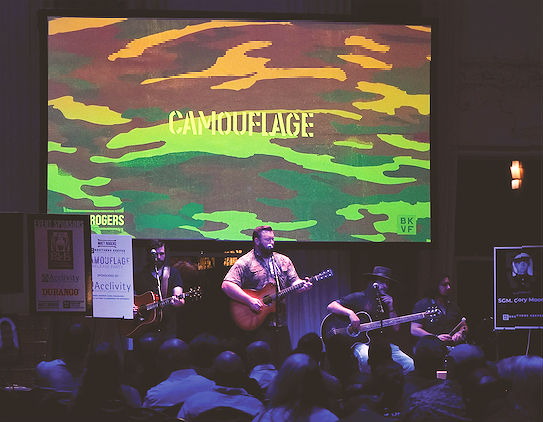Emigrant Wilderness
- Lakelife Magazine

- Jul 15, 2021
- 5 min read
To me, a wilderness is where the flow of wildness is essentially uninterrupted by technology; without wilderness the world is a cage. - David Brower
I’m perched on a warm, granite rock overlooking one of the most beautiful lakes I have ever seen. The water is a luminous shade of blue on this late August summer day and the afternoon sun is casting a light that makes the surface appear as though it is covered in a million dazzling diamonds. As my eyes adjust to the surroundings, I sleepily roll over to my side as I wake up from my afternoon siesta. My mom and best friend, Morgan, are also relaxing on this massive lakeside ledge. They are both deep in their books that they carried with them in their day packs. We are sitting at almost 9,000 feet above sea level. The closest trailhead is fourteen miles away. It is our third day of a week-long backpacking trip in the high Sierra Nevadas, and we are settling into this breathtaking landscape deep in the heart of a region known as Emigrant Wilderness.

Most people are familiar with Yosemite National Park, but very few have ventured off the beaten path into the wilderness area directly to the north. The land is dotted with numerous lakes connected by streams meandering through grassy meadows covered in wildflowers. The Emigrant Wilderness is 113,00 acres, more than twice the size of Vermont. There are over 185 miles of trails designated for foot or horse traffic only. The granite ridges are smaller in scale compared to Yosemite, but the area offers a true wilderness experience with very few tourists venturing into the more remote areas of the region. This has large benefits for the quality of trout fishing at the higher elevation lakes and was a main draw for our trip. To say that my dad is a trout fishing enthusiast would be an understatement. He frequently sneaks up to North Georgia for a day trip to spend a few hours fishing in the stocked rivers and streams of the Blue Ridge Mountains.

When scouting a potential destination for this trip, quality of fishing fell second in priority only to the level of remoteness on his list. Our other travel companions were my husband, Nick, brother, Larry, and Morgan’s husband, Matthew.
The recommended time to visit Emigrant Wilderness is from mid- July to mid-September. The earlier in the season you go, the higher the risk you will have to deal with lots of mosquitos from the moisture still present from the snow melt. If you go late in the season, your chances of snowfall and inclement weather will increase. Snow in October is not uncommon. Our trip was in late August and there were still some patches of snow in the shaded areas at higher elevations. It was dry and perfectly pleasant during the day for hiking, fishing, and lakeside naps. During the evenings and early mornings, it was a brisk low of 40°F.
The area was designated by Congress in 1975 and became protected by the Wilderness Act, which was established “to secure for the American people of present and future generations the benefits of an enduring source of wilderness.” Prior to that designation, Native American tribes inhabited the area for 10,000 years, but their numbers declined with the discovery of gold in 1848 that brought many miners and settlers to the region. Grazing allotments are still allowed throughout much of the region since this was an established practice before the area was designated as a wilderness. This wilderness was undeniably more authentic before the arrival of the miners, settlers, and their cattle, but as is the case of much of our country’s history, the governmental systems, acts, and proclamations were employed to pronounce the future of this land and the people who had once called it home.

We booked our trip with Aspen Meadow Pack Station, an outfitter that services Emigrant Wilderness. These outfitters offer guided services and excursions that range from bare minimalist to fully catered expeditions with your own private chef in the backcountry. On the morning of our departure, all seven of us saddled up and rode horses on the fourteen miles to Upper Buck Lake, which was our base camp for the entirety of the trip. My mom, a horseback rider from a very young age, made the journey look effortless, while the rest of us with varying levels of riding experience were a bit sore upon dismounting from the saddle after an eight-hour day. Our caravan also included two guides who led the horses and several pack mules that carried our camping gear, food, fishing gear, and a few luxury items like two inflatable rafts for our week in the wilderness.

Upper Buck Lake was an ideal base camp with scenic panoramic views and plenty of day trip options in all directions. We had a primitive, tranquil campsite tucked in between the granite boulders surrounding the lake. In the evenings, we gathered around a small campfire we made on top of one of the granite ridges. From there, we could sit and look across the lake at the massive wall of granite on the opposite side. The sky would be ablaze in a flame of pink and orange streaks which reflected in a perfect mirror image on the glassy surface of the water below. With darkness came the most impressive night sky with breathtaking views of the galaxies above. We saw shooting stars and admired the outline of the granite underneath the moonlit sky. Far away from any major cities or metropolitan areas, light pollution was nonexistent, and you could appreciate the peace and quiet of nature. There was no cell service and for one full week, we were unplugged and able to be fully present to the beauty of our immediate surroundings and each other’s company.

The high elevation lakes and streams that connect them are good for both spin and fly fishing. The water is, for the most part, crystal clear, as there is not a lot of soil runoff with the abundance of rock and granite in the region. Most areas are easy to scramble around, with the exception of some vertical sheers that are impassable without proper climbing equipment. The trout fishing did not disappoint and almost every night we were able to enjoy the bounties of the day. Pan fried trout cooked in just a little oil or butter, caught within the hour, sure beats a freeze-dried Mountain House meal any day. At the end of each day, we enjoyed campfire stories.
We talked about the adrenaline rush that occurred during our off-trail hiking expedition back from Emigrant Lake when we walked past not one, but two signs of fresh bear scat. We laughed about the invisible hiker that yelled out to us from across one of the lakes that we were going the wrong way and needed to turn around. And, of course, there was the glitter in my dad’s eyes as he talked about the fire red color of the scales and size of that one trout, the really big one, that got away at the last moment. In sharing his love for the wilderness with me, he has given me the confidence to go and explore this beautiful world while always remembering the true gift of sharing it with others.
Story by Katherine Lacksen Mahlberg and photos by South & West Photo
Published in the July/August 2021 issue of Lakelife magazine.



















Comments